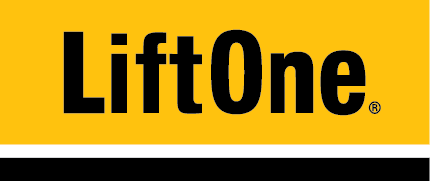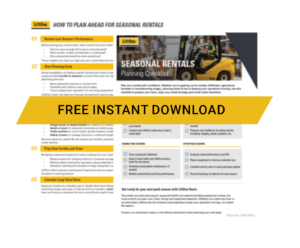Whether it’s a summer shipping surge, fall harvest or end-of-year retail rush, seasonal spikes can push your operations—and your equipment—to their limits. A well-timed equipment rental ensures you stay productive without overinvesting in your permanent fleet.
At LiftOne, we help businesses scale with confidence by delivering reliable rental solutions tailored to their seasonal needs. Here’s how to plan ahead for a smooth, successful peak season.
|
|
5 Steps to Plan for Seasonal Equipment Rentals
1. Review Last Season’s Performance
Before placing any rental orders, take a look at how your fleet handled the last peak period. Ask yourself:
- Did you have enough lift trucks to meet demand?
- Were certain models overworked or underused?
- Did unexpected downtime slow operations?
These insights can help you right-size your rental fleet and avoid repeating past challenges.
2. Start Planning Early
Rental availability can tighten quickly during busy times of year. Most businesses begin securing seasonal equipment 2–3 months in advance to ensure they have the right trucks when they need them.
Early planning gives you:
- More equipment options to choose from
- Flexibility with delivery and return dates
- Time to adjust your operation for incoming equipment
LiftOne’s team can help you forecast demand and reserve equipment in advance to avoid costly delays.
3. Match the Equipment to the Job
The right forklift or other material handling equipment can make all the difference in efficiency and safety during peak operations. Depending on your needs, you may want to consider:
- Electric pallet jacks for fast-paced picking environments
- Narrow aisle reach trucks for dense warehouse storage
- Cushion tire forklifts for indoor distribution centers
- Rough terrain or diesel forklifts for outdoor or construction work
- Aerial or boom for seasonal maintenance, facility prep, or high-reach tasks
- Trailer spotters (yard trucks) to move trailers quickly between loading docks and yards
- Railcar movers to manage inbound or outbound freight at facilities with rail access
Not sure what you need? We’ll help assess your facility, workload, and timeline to recommend the best rental options.
4. Prep Your Facility and Team
Bringing in seasonal equipment means making sure your team and workspace are ready. Key tips:
- Reserve space for charging stations or propane storage
- Refresh safety training for operators using unfamiliar trucks
- Schedule maintenance windows to keep equipment running smoothly
LiftOne offers operator training and responsive service support with every rental, so your team can stay focused on moving product.
5. Consider Long-Term Value
Seasonal rentals are a flexible way to handle short-term demand—but if your peak season starts stretching longer each year, it may be time to consider a rent-to-own or used equipment purchase. Our team can help you evaluate the most cost-effective path forward.
Get Ahead of the Rush
The earlier you start planning for seasonal forklift and material handling equipment rentals, the more control you have over costs, timing, and equipment selection. Whether you need one truck or an entire fleet, LiftOne has the inventory and expertise to keep your operation moving—no matter the season.
Contact our rental team today to start planning your next peak.











